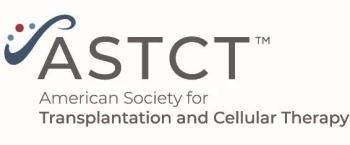
Chemo, Transplant May Improve Survival in Plasma Cell Leukemia
Patients with primary plasma cell leukemia experienced high rates of response and improved progression-free survival when treated with bortezomib, dexamethasone plus doxorubicin or cyclophosphamide followed by transplantation.
Patients with primary plasma cell leukemia (PCL) experienced high rates of response and improved progression-free survival when treated with bortezomib, dexamethasone plus doxorubicin or cyclophosphamide followed by transplantation, according to the results of a phase II study
According to the study published by Bruno Royer, MD, department of hematology at University Hospital, Av Laennec, France, and colleagues, primary PCL is a rare and aggressive form of myeloma defined as the “presence of ≥ 20% plasma cells in the peripheral blood or an absolute plasma cell count > 2 x 109/L.”
Patients with primary PCL, who are generally younger than those typically diagnosed with myeloma, have a poor prognosis; however, the recent introduction of the use of drugs like lenalidomide and bortezomib have resulted in some improvements in overall survival in these patients.
In this study, Royer and colleagues tested whether combined standard chemotherapy with autologous stem cell transplantation followed by allogeneic transplantation or maintenance therapy could lengthen survival among these patients. The study included 40 patients aged 70 or younger with newly diagnosed primary PCL. The median age of patients was 57.
Patients received 4 alternating cycles of bortezomib, dexamethasone plus doxorubicin or cyclophosphamide. The researchers collected peripheral blood stem cells from responding patients with less than 1% of circulating plasma cells before high-dose melphalan and autologous stem cell transplantation (HDM/ASCT). Patients then either received reduced-intensity conditioning allograft (RIC-allo) or a second HDM/ASCT followed by 1 year of bortezomib, lenalidomide, and dexamethasone.
Thirty-nine patients started the induction phase of the trial, and 35 (89%) completed the 4 planned cycles. The overall response rate was 69%. Ten percent of patients had a complete response (CR), and a very good partial response (VGPR) was observed in 26% of patients. Ten patients were refractory to the induction phase.
After a median follow-up of 28.7 months, the median progression-free survival was 15.1 months and the median overall survival was 36.3 months. The 12-month progression-free survival was 58%, and 12 patients were still alive at 1 year.
“Although the majority of the current study patients had achieved very good responses at the point of receiving the allograft (seven with [stringent] CR/CR and eight with VGPR), 35% experienced a relapse after the allograft,” the researchers noted. “It could be inferred that the RIC-allo regimen is not capable of controlling the aggressiveness of the PCL.”
In an accompanying
“Response to induction therapy, however, was not remarkable,” Musto noted. “Thus, although both cyclophosphamide and doxorubicin have demonstrated efficacy in [primary] PCL, the introduction of lenalidomide and/or incorporation of newer agents such as pomalidomide, carfilzomib, or daratumumab could hopefully optimize the induction phase and increase the rate and quality of response in future studies.”
Newsletter
Stay up to date on recent advances in the multidisciplinary approach to cancer.
















































































